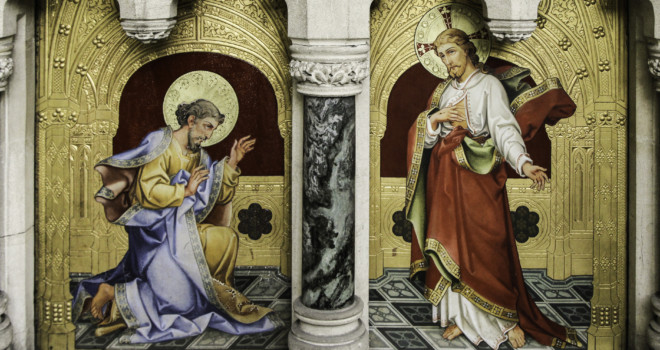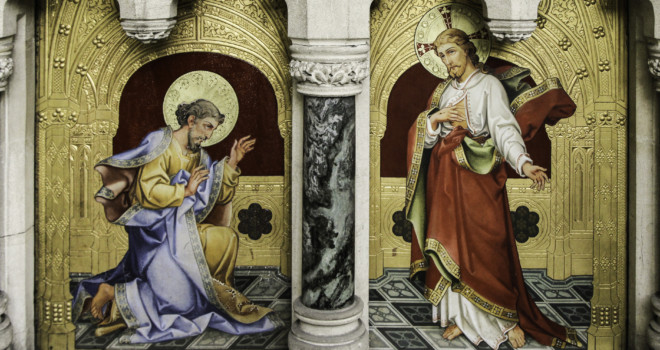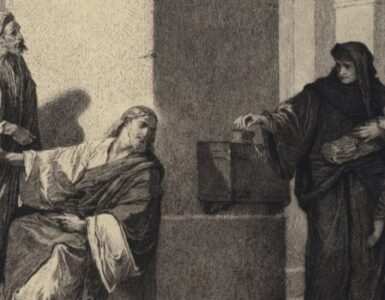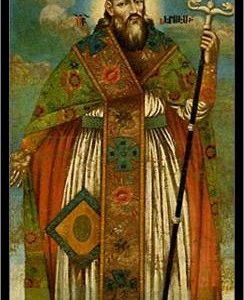Modern readers tend to see the Gospel through a filter of tradition. We see individual characters as we have been trained to see them: as the sum of the sermons preached about them. The text may present them as complex, with a variety of competing virtues and failings, but our mental shorthand reduces them to a single quality.
Take Doubting Thomas. His memory (like his nickname) rests largely on a single scene near the end of the fourth Gospel. The scene begins with the disciples hiding behind locked doors (John 20:19). They were afraid. They had already received the news of Jesus’ Resurrection, but still they dared not show their faces outside. The locks on the door presented no obstacle to the glorified body of the risen Jesus. He suddenly stood among the disciples. He blessed them, and he endowed them with power to forgive sins. All this took place, however, while Thomas was away.
Now Thomas, one of the twelve, called the Twin, was not with them when Jesus came. So the other disciples told him, “We have seen the Lord.” But he said to them, “Unless I see in his hands the print of the nails, and place my finger in the mark of the nails, and place my hand in his side, I will not believe.”
Eight days later, his disciples were again in the house, and Thomas was with them. The doors were shut, but Jesus came and stood among them, and said, “Peace be with you.” Then he said to Thomas, “Put your finger here, and see my hands; and put out your hand, and place it in my side; do not be faithless, but believing.” Thomas answered him, “My Lord and my God!” Jesus said to him, “Have you believed because you have seen me? Blessed are those who have not seen and yet believe.” (John 20:24–29)

Perhaps Thomas can be forgiven for disbelieving his fellow disciples. They had hardly proven themselves reliable over that Passover holiday. They had all fled the Master — all except John, who, tradition tells us, was the youngest of them.
Thomas was indeed incredulous, and his retort had the same quirky combination of courage and pessimism that he had shown at other moments in Jesus’ ministry. When the Master informed the Twelve that he would be going onward to Judea, Thomas said to the others: “Let us also go, that we may die with him” (John 11:16). On another occasion, when Jesus asked his disciples to follow after him, Thomas raised the obvious question that no one else dared to ask: “Lord, we do not know where you are going; how can we know the way?” To which Jesus replied: “I am the way, and the truth, and the life;
no one comes to the Father, but by me” (John 14:5–6). Thomas was brooding and could be downbeat; and yet he managed to elicit some of Jesus’ most stunning acts of self-revelation.
None was more stunning than Thomas’s encounter with the risen Lord. Jesus did not merely identify himself— which would have been enough — but invited Thomas to make the most invasive verification: “Put your finger here . . . put your hand in my side.” The moment bespoke an intimacy between Jesus and those chosen disciples. In the encounter we see a bond of fellowship and friendship all the more remarkable because those men had, only days before, abandoned Jesus when he was suffering.
The Apostles: Those Who Are Sent
The Apostles were more than administrators in the Church, more than merely functionaries and overseers.
The word apostle itself has a dynamic quality. It denotes a sending, a mission, a movement outward. The Apostles’ lives were marked by activity; their story is told, appropriately enough, in the book titled the Acts of the Apostles.
The word Apostle indicates a certain dynamism in the office and in the Church. The Church of Christ was not to be (as Israel had been) a reserve of purity, insulated from the world; it was rather an overflow of purity into the world, touching all the nations. As Jesus sent the Apostles forth on their mission, he said: “you shall be my witnesses in Jerusalem and in all Judea and Samaria and to the end of the earth” (Acts 1:8).
The New Testament tells some of the story of some of their travels. In the centuries immediately afterward, the earliest Christian historians set down the stories (and legends) of all of the Apostles’ missionary journeys. Many of these were gathered together in books modeled after the New Testament’s history: the Acts of John, Acts of Peter, Acts of Paul, and Acts of Andrew — all were likely set down before the year 200.
If these early accounts are to be trusted, perhaps no one carried out Jesus’ command as literally as Doubting Thomas did. Jesus told his Apostles to be his witnesses “to the end of the earth,” and all the early traditions agree that Thomas went to the limits of the known world: he brought the gospel to India. The testimony of this is consistent in the most ancient histories and the sermons and letters of the early Church Fathers. When Pantaenus, a second-century missionary, traveled from Egypt to India, he found the Church already established there. When later missionaries (and explorers such as Marco Polo) arrived, they found Christians who honored Thomas as their patron. For centuries, epic poems about Thomas were handed down not only in Christian families, but also in Hindu families!
Witness to India is a fitting end to the life of the man who dared to go abroad in Jerusalem in the days after Jesus’ death.
It seems as if the earth itself— and human events — had conspired for centuries to make way for the acts of the Apostles. Such missions would have been difficult or impossible before Alexander the Great had opened up the Silk Road to the Far East and before the Romans had laid down thousands of miles of roads in the West.
Travel to India, in fact, was arduous until the time of Christ. It was right around then that Caesar Augustus suppressed piracy on the high seas. It was right around then that a sailor named Hippalus discovered the trade winds, enabling ships to travel on the open ocean from the Red Sea to the Indian peninsula.
The world, it seems, was waiting for someone to be sent.
Editor’s note: This article is an excerpt from The Apostles and Their Times, which is available from Sophia Institute Press.
image: Dominus Meus et Deus Meus by Fr. Lawrence Lew, O.P. / Flickr (CC BY-NC-ND 2.0)












